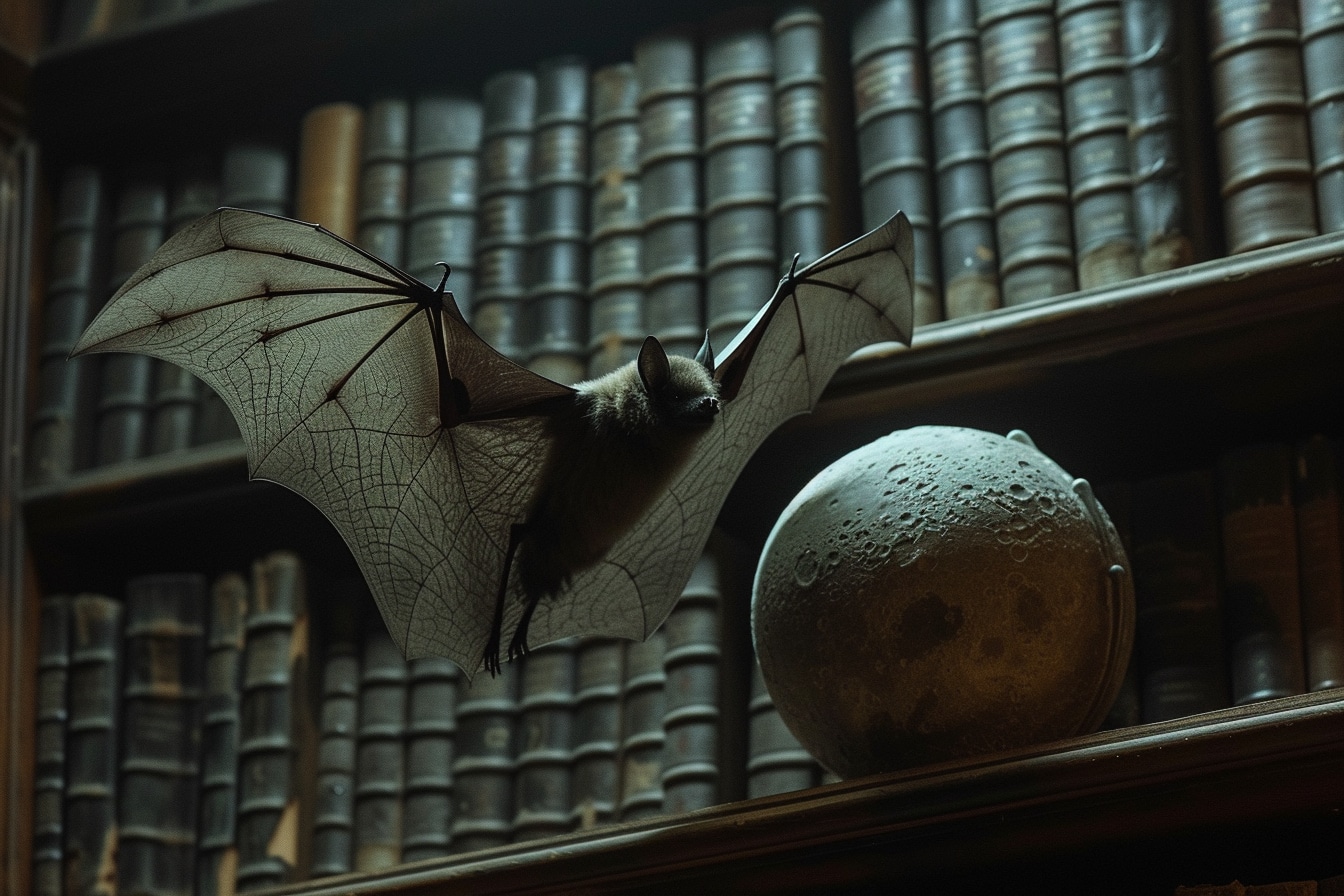Unveiling the Night Sky Mystique: The Intriguing Origins of Bats’ Name and Nature

Bats are often shrouded in mystery and superstition. These nocturnal flying mammals have always intrigued and sometimes even frightened man since the dawn of time. But what is hidden behind their name, so strange and evocative of the universe of the night? This name with sometimes dark connotations which seems straight out of an ancient tale?
What is a bat?
A bat is not a bird, despite its ability to fly. It is in fact the only mammal that has mastered active flight in such an accomplished manner. Their order, Chiroptera, literally means “hand wings”, an allusion to the structure of their upper limbs transformed into wings. With more than a thousand varied species, these creatures are very diverse and are found in almost all environments on the planet, except the Arctic and Antarctic zones.
The origin of the name “bat”
A visual connection
One hypothesis is based on the very distinctive appearance of this animal. A head that can recall that of a rodent, membranous wings without feathers, and often an apparent absence of hair in certain places, would have earned it this name literally meaning “bald mouse”. Morphological disparities between species complicate this explanation, but it remains that a general impression of “nudity” is transmitted by certain individuals.
Ancient beliefs
Ancient beliefs and folklore are perhaps also responsible for the name of these creatures of the night. Associated with magic, witchcraft and the night across ages and cultures, bats have stimulated the popular imagination. Their nocturnal nature and the strangeness of their silent flight have often given them associations with dark or supernatural forces.
The unique behavior of bats
Living sonar
A distinctive ability of bats, biosonar or echolocation, is attracting considerable scientific interest. They emit sounds that are inaudible to the human ear and interpret the echo returned by surrounding objects or prey to move and hunt in total darkness. This exceptional adaptation allows them to navigate in complete darkness with remarkable precision.
Shades in the night
Bats are not all, contrary to the typical image, strict creatures of the night. Some species opt for twilight or diurnal activity. Their ecological role is essential: they pollinate many plants and control insect populations, thus playing a crucial role in the preservation of ecosystems.
The bat ecosystem
Necessary predators
The diet is just as varied for these mammals. The majority of species are insectivorous, while others are frugivores, nectarivores or carnivores, feeding on small animals. A few, like the famous vampire bats of South America, specialize in hematophagy, feeding on blood.
Threatened habitats
Sadly, the world of bats is under threat. The destruction of their habitat, light and chemical pollution, as well as diseases such as white-nose syndrome threaten their survival. Their ecological importance makes these threats all the more worrying for the biological balances of our planet.
Bats and man
An ancient link
The relationship between bats and humans is rich in ambivalence. Fascination is often mixed with repulsion or fear, feelings fueled by myths and legends. Bats play varied roles in these stories, ranging from evil omens to protective entities.
A potential collaboration
Conservation initiatives emerge to save these mysterious animals. Shelters are built and awareness campaigns aim to educate the public about their importance. In addition, medical research takes advantage of the study of bats to understand their resistance to many diseases, potentially valuable knowledge for humans.
Why do their names still fascinate us?
An aura of mystery lingers around the bat’s name. Is it because of their nocturnal activity, their silent flight, the connection with ancient beliefs or simply the stark visual contrast with other mammals? Every aspect of bats arouses in humans a shared feeling of admiration and concern, reinforcing the veil of secrecy around their name and their very nature.
If the exact origin of their name is a complex and debated subject, the fascination they arouse is very real. Throughout the centuries, bats have inspired stories and legends, but today they also attract the kind attention of scientists, conservationists and curious people. These mysterious flying mammals continue to fly through our collective imagination, reminding us that nature still has so many secrets to reveal. Their name reflects an ancestral connection between humans and nocturnal wildlife, a connection that will hopefully persist and strengthen to better understand and protect these extraordinary creatures that inhabit our nights.
Comments
Leave a comment